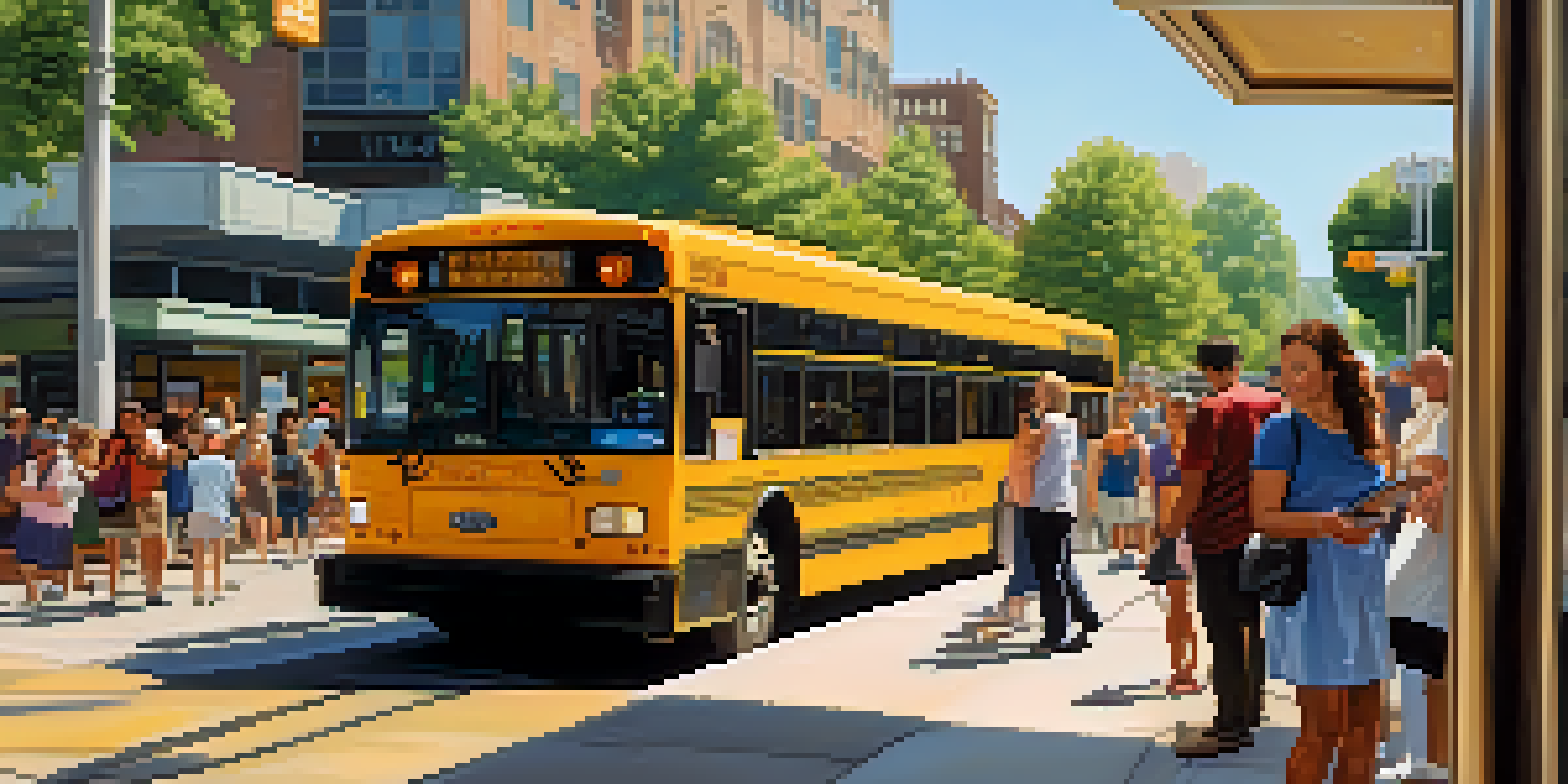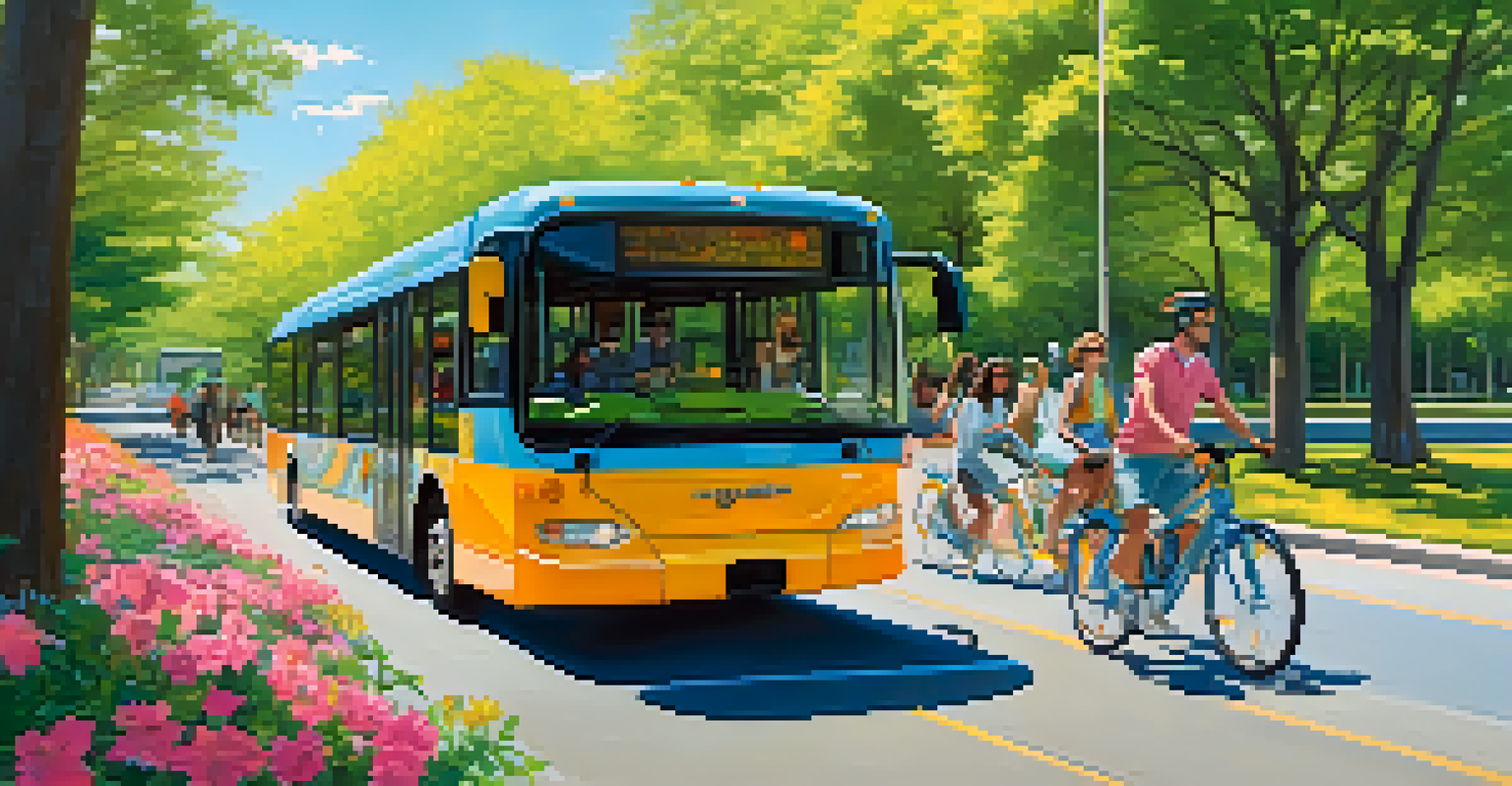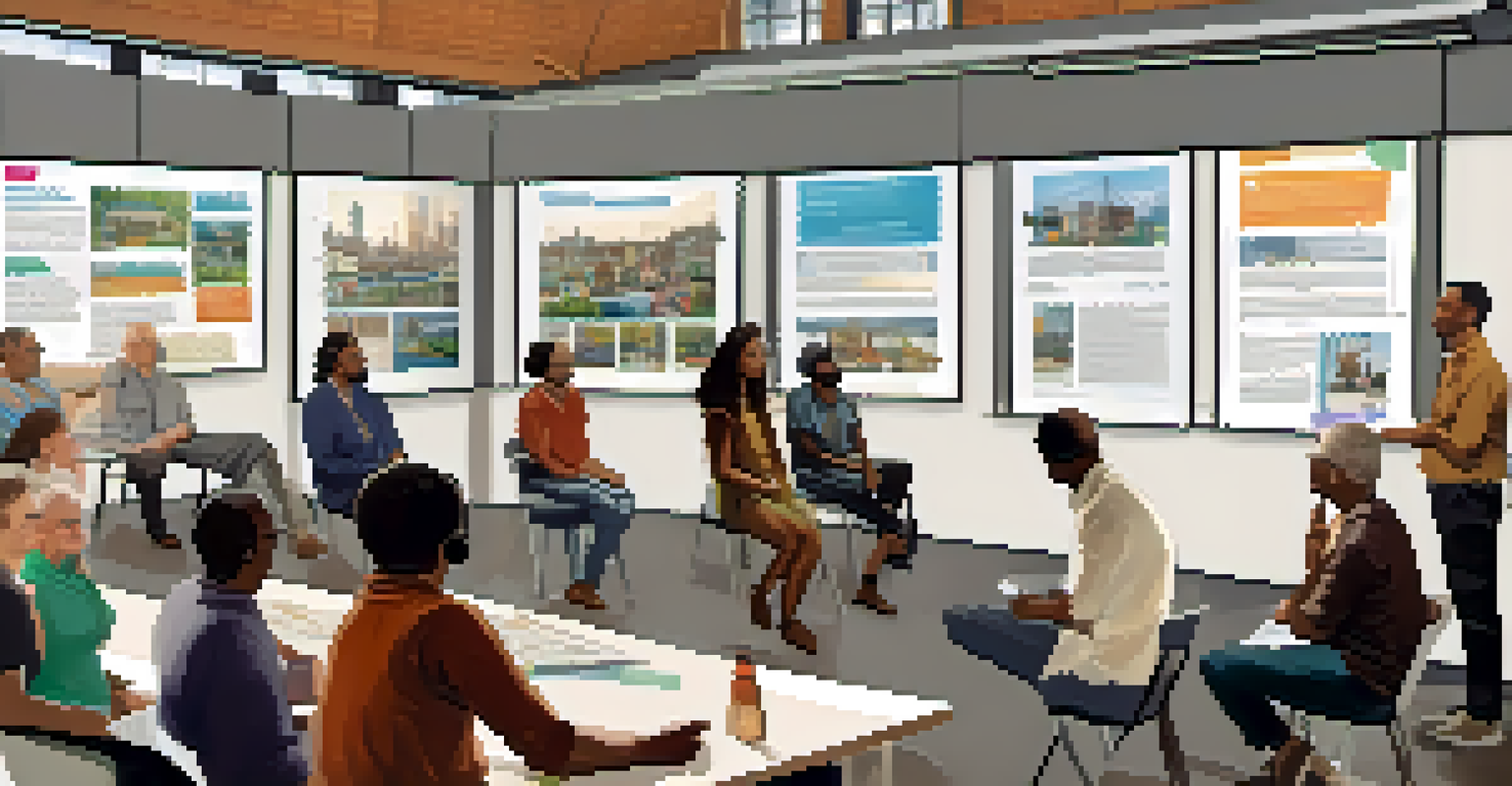Promoting Public Transport: Green Travel in Charlotte

The Importance of Sustainable Transport in Charlotte
Sustainable transport is essential for reducing carbon emissions and improving air quality in Charlotte. By shifting to greener travel options, the city can help protect its natural beauty and promote healthier lifestyles. This change not only benefits the environment but also enhances the overall quality of life for residents.
Public transportation is a lifeline for many cities; it can improve air quality, reduce traffic congestion, and boost local economies.
Public transport plays a crucial role in this sustainability journey. Buses and light rail systems can significantly reduce the number of cars on the road, leading to less traffic congestion and lower greenhouse gas emissions. Encouraging more people to use public transport is vital for making Charlotte a greener city.
Moreover, embracing sustainable transport options can drive economic growth. A robust public transport system attracts businesses and tourists alike, creating jobs and enhancing local economies. This interconnectedness of transport and economic vitality is something Charlotte can capitalize on.
Current Public Transport Options in Charlotte
Charlotte boasts a variety of public transport options, including buses, light rail, and streetcars. The Charlotte Area Transit System (CATS) operates these services, providing residents with accessible ways to navigate the city. With more than 70 bus routes and the LYNX light rail line, there’s an option for almost everyone.

The LYNX Blue Line, which runs from South End to University City, has seen significant ridership growth since its opening. This growth highlights a growing appreciation for public transport in the region. However, there's still room for improvement to make these services even more appealing and efficient.
Sustainable Transport Benefits Charlotte
Embracing sustainable transport options enhances air quality, reduces emissions, and improves the overall quality of life for residents.
Additionally, the introduction of the CityLYNX Gold Line streetcar has connected more neighborhoods and provided residents with an easy way to travel. These various transport options are stepping stones towards a more integrated and efficient public transport system.
Benefits of Using Public Transport
Using public transport offers numerous benefits, both for individuals and the community. For starters, it can save money; commuting by bus or train is often cheaper than maintaining a car. This financial relief can be a game-changer for many families, allowing them to allocate their budget to other important areas.
Sustainable transport is not just about reducing emissions; it's about creating vibrant communities that are connected and accessible.
Moreover, public transport encourages social interaction and community building. On a bus or train, people have the opportunity to meet neighbors and engage in conversations, fostering a sense of belonging. This social aspect makes public transport more than just a means of getting from point A to point B.
Lastly, there’s a significant environmental impact. Fewer cars on the road mean reduced emissions and less pollution, contributing to cleaner air. Each trip taken on public transport is a step towards a more sustainable and healthier Charlotte.
Innovative Green Initiatives in Charlotte
Charlotte is implementing innovative green initiatives to improve public transport. For example, CATS is exploring the use of electric buses, which produce zero emissions and offer a quieter, smoother ride. This initiative not only benefits the environment but also enhances the passenger experience.
Another exciting development is the introduction of bike-sharing programs in conjunction with public transport. These programs encourage eco-friendly travel by allowing residents to easily switch between cycling and public transport. By integrating these modes of transportation, Charlotte is creating a more cohesive and user-friendly system.
Public Transport Drives Economic Growth
A robust public transport system attracts businesses and tourists, fostering job creation and strengthening local economies.
Furthermore, the city is investing in infrastructure that supports sustainable travel, such as dedicated bus lanes and improved pedestrian pathways. These enhancements aim to make public transport a more attractive option, ultimately leading to a greener urban environment.
Community Engagement in Promoting Public Transport
Community involvement is crucial for the success of public transport initiatives. Charlotte residents are encouraged to participate in planning meetings and provide feedback on transport services. This engagement helps ensure that public transport meets the needs of the community and fosters a sense of ownership among users.
Local organizations also play a vital role in promoting public transport. By hosting events and providing information on the benefits of sustainable travel, these groups can help shift public perception. When people see their neighbors using public transport, it can inspire them to do the same.
Education campaigns about the environmental and economic benefits of public transport can further enhance community engagement. By raising awareness and providing information, Charlotte can cultivate a culture that values sustainable travel options.
Challenges Facing Public Transport in Charlotte
Despite the positive strides, Charlotte's public transport system faces several challenges. One major issue is funding; maintaining and expanding services requires significant investment. Without adequate financial support, it can be difficult to sustain and improve the quality of public transport.
Another challenge is the perception of public transport as an option for those without cars. Overcoming this stigma requires shifting public attitudes and promoting the benefits available to all residents, regardless of their vehicle ownership. It’s essential to highlight that public transport can serve as a convenient alternative for everyone.
Community Engagement Shapes Transport
Active community involvement in public transport planning ensures services meet local needs and fosters a culture that values sustainable travel.
Lastly, connectivity is a crucial factor. Many potential riders may find public transport options limited or inconvenient for their specific routes. Addressing this issue involves not only enhancing existing services but also ensuring that they are well-integrated with other modes of transport.
The Future of Public Transport in Charlotte
Looking ahead, the future of public transport in Charlotte is optimistic. With ongoing investments in infrastructure and technology, the city aims to create an efficient and user-friendly system. Enhancements like real-time tracking and mobile ticketing can streamline the commuting experience for passengers.
The continued push for sustainability will also shape the future of public transport. By focusing on eco-friendly initiatives, Charlotte can lead the way in creating a greener urban landscape that values environmental stewardship. This commitment to sustainability can inspire other cities to follow suit.

Community involvement will remain a key pillar in shaping the future of public transport. As residents continue to engage in discussions and provide feedback, Charlotte’s public transport system can evolve to better meet their needs and expectations, paving the way for a thriving and sustainable transportation network.